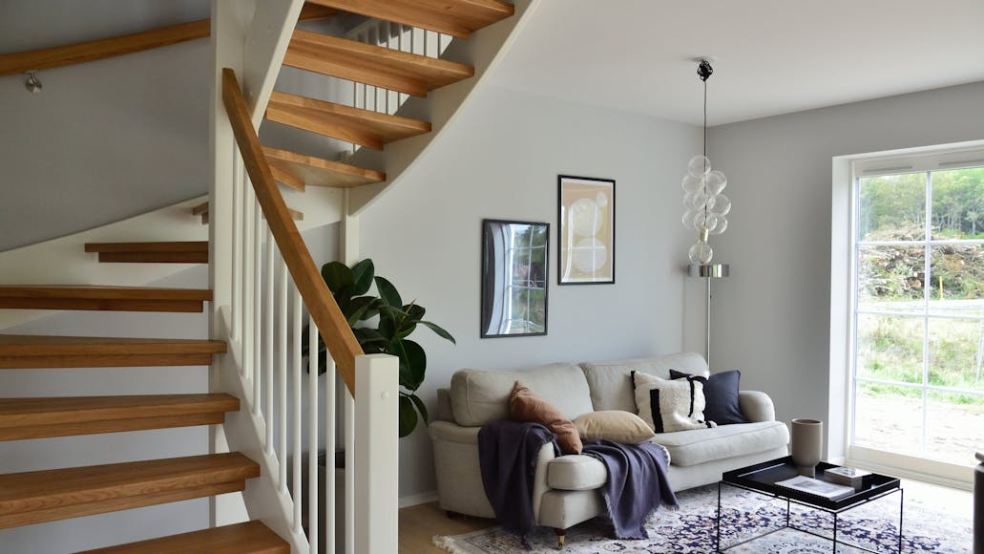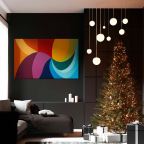
Why Your Home Doesn’t Have to Be a Sanctuary to Support Wellness
By Sophie Marlowe
The phrase “make your home a sanctuary” has been hard to avoid over the years as it’s something of a golden rule in wellness design. Splashed across Pinterest boards, wellness blogs, and glossy magazines, suggesting that tranquillity is the ultimate design goal, and while the sentiment is appreciated, it isn’t necessarily realistic.
With the same muted tones, minimalist furnishings, soft textures, and emphasis on calm, what’s marketed as universally soothing isn’t always reflected in real-life design. For some, the sanctuary aesthetic is cold, contrived, and sometimes even stressful.
The Problem with ‘Sanctuary’
In theory, the word “sanctuary” sounds lovely. But in practice, it assumes that calm equals wellness for everyone, when really wellness looks very different depending on personality, lifestyle, and even cultural context.
Too much minimalism can feel sterile, and not everyone can relax in a space that looks more like a hotel lobby than a home. For example, a pared-back beige living room might appear serene in photos, but in daily life it can feel… lifeless.
For some, tranquillity isn’t actually peaceful or calming; it’s monotony. A completely neutral home might stifle creativity or feel disconnected from joy.
The idea of a sanctuary is to feel free from the pressures of everyday life… except as an aesthetic, it’s in its nature to pressure you. When your home doesn’t live up to the idealised “calm haven” that you see on social media, it can spark guilt or stress, especially when mess, clutter, or even noise naturally creep into your space.
The truth of the matter is that not everyone wants to live in a temple of serenity. Some thrive in colour, pattern, and a little chaos. Others find wellness in energy, not stillness.
Why the Sanctuary Aesthetic Took Over
The dominance of this cliché comes from the wider wellness industry, which often pushes minimalism and spa-like interiors as the cure to modern stress. Then you have social media amplifying the aesthetic with its pale palettes and clean lines.
That said, the aesthetic isn’t inherently bad, and it does work beautifully for some. The issue lies in the fact that it overlooks the reality of the situation: wellness isn’t one-size-fits-all. Just as exercise routines and diets vary, so should approaches to home design.
Designing Around Cliché
Like most aesthetics, “the home as a sanctuary” idea is generalised to a wider audience. Meaning some aspects may suit your lifestyle beautifully, while others fall flat. However, this doesn’t mean you need to ditch the concept entirely; instead, you can just reinterpret the parts that don’t resonate so they feel authentic to you.
Create Joyful Spaces Instead of “Calm” Ones: Calm doesn’t necessarily mean wellness; sometimes joy does. Bold colours, playful furniture, or statement flooring can lift the mood in ways beige walls never could. Whether it’s a patterned rug or a chevron floor, you can bring a sense of warmth and personality to your space while keeping it grounded.
Prioritise Comfort Over Perfection: Instead of obsessing over curated minimalism, focus on how the space feels to live in. At the end of the day, cosy seating, layered textures, and flooring that’s warm underfoot create more comfort than perfectly aligned, symmetrical and neutral décor ever could.
Embrace Personality and Clutter: A home filled with meaningful items, books, and family photos might not fit social media’s idea of “zen”, but it can feel deeply nurturing. For many, wellness comes from a sense of belonging, not from aesthetics that promote a sense of peace.
Zone for Balance: Instead of turning the entire home into a sanctuary, create pockets of calm where they’re most useful, such as the bedroom or bathroom. In other areas, focus on vibrancy and sociability. Flooring can also help distinguish these zones: think soft carpet or cork in rest areas, and durable wood or LVT in livelier spaces.
When Calm Works & When It Doesn’t
For introverts, highly sensitive personalities, or people juggling busy lifestyles, calm spaces can be a blessing where minimalism and soft tones can genuinely soothe the nervous system. But for extroverts, creatives, and those energised by visual stimulation, these same design choices might feel dull or even alienating. Recognising this difference is the key to moving beyond wellness cliches.
The Myth of the Calm Home
The idea of a sanctuary home isn’t wrong; it’s just not universal. Wellness design should never be reduced to one look or formula. Instead, it should be about balance. You need to create a home that reflects the rhythms, personalities, and needs of those who live there.
True wellness design, after all, comes from authenticity. Not cliches. And a home doesn’t have to look like a sanctuary to feel like one to you.
Author Bio:
Sophie Marlowe is a digital content writer and outreach executive for Luxury Flooring. She specialises in crafting engaging blogs on home improvement and home decor with a focus on flooring. Sophie writes handy how-tos, easy guides, and helpful comparisons, letting the reader be informed and inspired to take their home to the next level.











